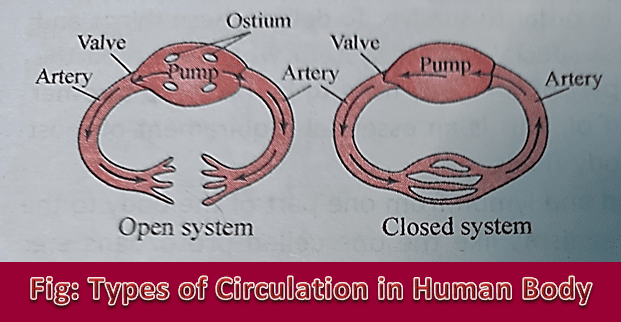Types of Circulation:
A large organism needs a sufficient amount of nutrients as it continues to remove wastes. A circulatory system can be known as closed or open. It depends on its transport system. A closed circulatory system is able to transport fluids with vessels only whereas an open circulatory system is where the fluids are able to leave the vessels and enter cavities or spaces.
1. Open Circulatory System in an Invertebrate: Invertebrates open circulatory systems such as spiders, insects, and many other animals. The fluids are pumped into the pulsating vessels to the heart and then into shorter vessels near the head, which then empty into large spaces called sinuses in the cavity. The transport fluid is called Haemolymph and is able to flow freely in the sinuses. The exchange of nutrients and wastes is done by diffusion between the hemolymph and the cell.

2. Closed Circulatory System in a Vertebrate: Some invertebrates and all vertebrates have a closed circulatory system. Their transport fluid is blood and is contained in vessels and never flows in cavities. The heart pumps blood through the entire body. Blood is first pumped through blood vessels, and within blood vessels, there are veins that carry blood away from the heart and to organs, and capillaries are formed to join arteries and veins together.
The exchange of nutrients, wastes, and gases is done within the blood in capillaries and the fluids surrounding the cells. The fluid containing nutrients, wastes, and gases is called ’tissue fluid’ or ‘interstitial fluid’.